Section 14
Plays, Cartoons, and Graphic Novels
14.1 Fundamentals
14.2 Cast of Characters
14.3 Scene Settings
14.4 Stage Directions
14.5 Prose Plays
14.6 Verse Plays
14.7 Mixed Prose and Verse Plays
14.8 Conclusion of Play
14.9 Interviews
14.10 Cartoons
14.11 Graphic Novels
14.12 Samples
a. Use a cell-5 heading when a heading is included.
b. Use 1-3 margins for the cast of characters, with each name followed on the same line by the character identification.
c. Retain font attributes on speaker names; omit font attributes on speaker identifications.
d. Follow print punctuation used to separate names from any following identifications. Note: Do not insert punctuation that does not appear in print.
Example 14-1: Simple Cast of Characters

,bapti/a ,m9ola1 ,"f ( ,ka!r9a & ,bianca
,v9c5tia1 ,"f ( ,luc5tio
,ka!r9a "<,kate"> ,m9ola1 ,! 8%rew0 ( !
⠀⠀title
,petru*io
,bianca1 ,si/] ( ,ka!r9a
Example 14-2: Cast of Characters with Fonts

^1,luc5tio ,suitor ( ,bianca
^1,gremio ,suitor ( ,bianca
^1,hort5sio ,suitor ( ,bianca
a. Repeat the cast of characters in each volume of the continued play.
b. Include the repeated cast of characters in print page number order in the front matter pages.
c. Include the print page number on the front matter page.
d. Include the transposed print page numbers for the repeated cast of characters on the title page. For example, if page 60 is the print page number for the cast of characters:
Title page: Print pages 5, 60, 80-95
a. Titles and scene numbers are centered headings.
b. Follow print for blocked or indented paragraphs.
c. Follow print for use of enclosure symbols, e.g., brackets or parentheses. Do not add enclosure symbols if none are used in print.
d. Omit font attributes unless needed for distinction.
e. Insert a blank line to separate scene settings from dialogue.
a. Follow print for enclosure symbols used for internal stage directions. Do not add enclosure symbols if none are used in print
b. Follow print placement and punctuation when stage directions or cues follow the speaker's name.
Example 14-3: Stage Directions After a Speaker's Name
,anne4 .<lau<+.> ,isn't t a b1uti;l
⠀⠀balloon8
c. Ignore font attributes used for stage directions, unless needed for distinction, e.g., when stage directions after a speaker's name are not enclosed in punctuation. If text within stage directions requires emphasis for distinction, use the typeform indicator that best represents print emphasis of surrounding text.
Example 14-4: Italics Retained for Unenclosed Stage Directions
,,mama .1hy/]ically3 ,b ,i c't d any?+
⠀⠀ab t6
,,jessie .1quietly3 ,no4 ,y c't4
Example 14-5: Stage Directions within Dialogue

,john "<9to ph"o">3 ,i c't talk n[4
⠀⠀"<,pause"> ,:at8 "<,pause"> ,hmm4
⠀⠀"<,pause"> ,all "r1 ,i 444 ,i4 ,c't4
⠀⠀,talk4 ,n[4 ,no1 no1 no4 ,i .1,"k ,i
⠀⠀did1 b 4444 ,:at8 ,hello4 ,:at8 ,%e
⠀⠀.1:at8 ,%e .1c't1 %e sd ! agree;t is
⠀⠀void8 444
a. Use 1-3 margins for each speaker's name and accompanying dialogue.
b. Follow print for capitalization and emphasis. If print uses both full capitalization and emphasis to show speaker names, retain the capitalization and omit the emphasis. (See Sample 14-3: Dialogue on page 14-14.)
c. Follow print for punctuation shown after the name of each speaker.
d. Insert two blank spaces between speaker names and dialogue if print shows no distinction between the names and the dialogue, e.g., emphasis on the names; punctuation between the names and related dialogue.
e. Use 5-3 margins for additional paragraphs by the same speaker in the same dialogue. (See Sample 14-4: Speaker with Multiple Paragraphs of Dialogue on page 14-15.)
a. Ignore enclosure symbols when they are used to indicate that two or more characters are speaking at the same time with different dialogue. Precede the simultaneous speeches with a transcriber's note. Sample:
Martha and Peter together
b. Indicate the resumption of normal dialogue by the following transcriber's note. Do not insert a blank line before or after the transcriber's note. Sample:
Solo
(See Sample 14-5: Simultaneous Speakers on page 14-16.)
c. Do not attempt to duplicate print when dialogue of simultaneous speakers is printed in columns. Use the dialogue format as directed above. (See Sample 14-6: Columned Dialogue Ignored on page 14-17.)
14.5.3 Stage Directions between Lines of Prose Dialogue
a. Use 7-7 margins for stage directions or cues.
b. Use 9-7 margins for additional paragraphs of stage directions.
c. Ignore font attributes used for stage directions.
d. Do not insert blank lines before or after stage directions or cues printed outside or between the lines of dialogue.
Example 14-6: Unenclosed Stage Directions

,,jessie3 ,x's n a joke1 ,mama4
⠀⠀⠀⠀⠀⠀,mama wat*es = a mo;t 9 sil;e4
,,mama3 ,t gun's no gd1 y "k4 ,he broke
⠀⠀x "r 2f he di$4 ,he dropp$ x 9 ! mud
⠀⠀"o "d4
a. Use 1-5 margins for the first line of dialogue.
b. Use 3-5 margins for additional lines by the same speaker.
c. Follow print for capitalization and emphasis. If print uses both full capitalization and emphasis to show speaker names, retain the capitalization and omit the emphasis.
d. Follow print for punctuation shown after the name of each speaker.
e. Insert two blank spaces between speaker names and dialogue if print shows no distinction between the names and the dialogue, e.g. emphasis on the names; punctuation between the names and related dialogue.
(See Sample 14-8: Verse Play on page 14-19.)
a. Insert three blank cells between the speaker's name and the beginning of the dialogue.
b. Explain this usage on the Transcriber's Notes page, or in a transcriber's note before the beginning of the play. Sample:
Three blank cells have been inserted when print shows a wide space following a speaker's name.
Example 14-7: Verse Play with Extended Blank Space

,,antonio3 ,i'll t1* y h[ to fl[4
,,seba/ian3⠀⠀⠀,d s4 ,to ebb
⠀⠀,h]$it>y slo? 9/ructs me4
,,antonio3⠀⠀⠀,o1
⠀⠀,if y b knew h[ y ! purpose *]i%
a. Use 7-7 margins for stage directions or cues.
b. Use 9-7 margins for additional paragraphs of stage directions.
Example 14-8: Two Paragraphs of Verse Stage Directions
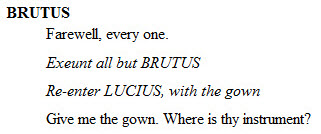
,,brutus ,f>ewell1 e "o4
⠀⠀⠀⠀⠀⠀,exeunt all b ,,brutus
⠀⠀⠀⠀⠀⠀⠀⠀,re-5t] ,,lucius1 ) ! g[n
⠀⠀,give me ! g[n4 ,": is ?y 9/ru;t8
3-5 margins for the verse sections.
14-20.)
Example 14-9: Interview
.1,report] ,mr4 ,presid5t1 h[ 0 yr
⠀⠀vaca;n at ,camp ,david8
.1,presid5t ,x 0 f9e4
a. It is often useful to insert a brief scene setting describing the cartoon and the characters before beginning the cartoon. Include this in a transcriber's note, starting on the line after the cartoon and title information.
b. Use 1-3 margins for dialogue.
c. Insert two blank spaces between speaker names and dialogue if print shows no distinction between the names and the dialogue, e.g. emphasis on the names; punctuation between the names and related dialogue. Do not enclose names or character identifiers in transcriber's note indicators. A transcriber's note is required (either at the site or on the Transcriber's Notes page).
a. Describe the scene setting in a transcriber's note using
7-5 margins.
b. Use 7-5 margins for the caption to the cartoon.
Example 14-10: Elements of Single-Frame Cartoon
⠀⠀⠀⠀date & copy"r 9=ma;n
⠀⠀⠀⠀⠀⠀@.<,sc5e sett+ describ+ !
⠀⠀⠀⠀c>toon@.>
⠀⠀⠀⠀⠀⠀@.<,cap;n@.> ,cap;n text
a. Using 1-3 margins, begin dialogue with the character's name followed by two spaces.
b. Use initial capitalization when dialogue is printed in all capital letters.
c. When the dialogue is continued in another frame, repeat the character's name, followed by two spaces.
d. When a character is not identified, an identifying trait is used as the character name, e.g., Boy 1, Boy 2, Man with Hat, etc.
e. Give dialogue from an unknown character an identifier, such as "Narrator" or "Unseen Character."
f. If necessary, a brief description of the action in the frame is enclosed in the transcriber's note with the frame number. If the action relates only to a specific character, insert a transcriber's note following the character's name. This description need not be limited to seven words.
g. Look at the entire cartoon, graphic novel, etc., before writing the description.
(See Sample 14-11: Cartoon on page 14-22.)
a. Narrative boxes use 1-3 margins.
b. If the narrative box appears within a frame, insert the text from the narrative into that frame. If the narrative box is outside one of the frames, treat it as a separate frame and follow the guidelines for formatting frames.
(See Sample 14-12: Graphic Novel on page 14-24.)
Sample 14-2: Scene Setting, page 14-13
Sample 14-3: Dialogue, page 14-14
Sample 14-4: Speaker with Multiple Paragraphs of Dialogue, page 14-15
Sample 14-5: Simultaneous Speakers, page 14-16
Sample 14-6: Columned Dialogue Ignored, page 14-17
Sample 14-7: Two Paragraphs of Prose Stage Directions, page 14-18
Sample 14-8: Verse Play, page 14-19
Sample 14-9: Mixed Prose and Verse Stage Directions, page 14-20
Sample 14-10: Conclusion of Play, page 14-21
Sample 14-11: Cartoon, page 14-22
Sample 14-12: Graphic Novel, page 14-24
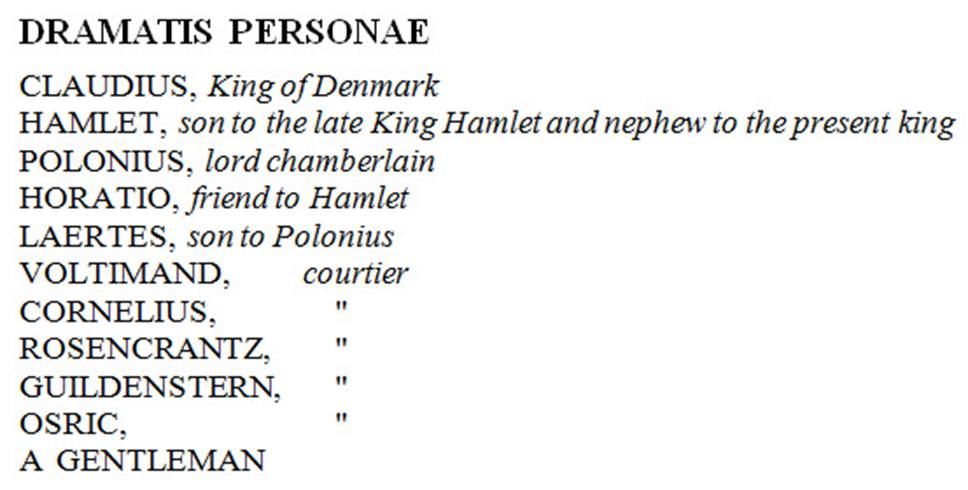
1⠀,,dramatis ,,p]sonae
2⠀,,claudius1 ,k+ ( ,d5m>k
3⠀,,hamlet1 son to ! late ,k+ ,hamlet &
4⠀⠀⠀nephew to ! pres5t k+
5⠀,,polonius1 "l *amb]la9
6⠀,,horatio1 fr to ,hamlet
7⠀,,la]tes1 son to ,polonius
8⠀,,voltim&1 c\rti]
9⠀,,cornelius1 "1
10 ,,ros5crantz1 "1
11 ,,guild5/]n1 "1
12 ,,osric1 "1
13 ,a ,,g5tleman
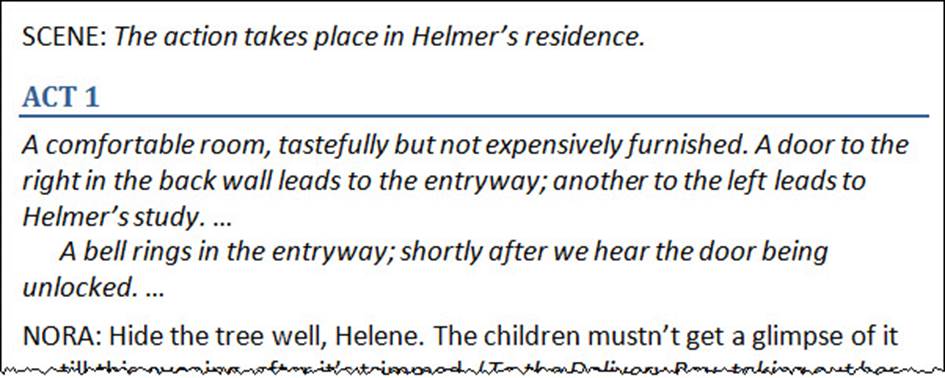
1⠀,,sc5e3 ,! ac;n takes place 9 #,-
2⠀,helm]'s resid;e4
3⠀⠀⠀⠀⠀⠀⠀⠀⠀⠀⠀⠀⠀⠀⠀⠀⠀⠀⠀⠀⠀⠀⠀⠀⠀⠀⠀⠀⠀⠀⠀⠀⠀⠀⠀⠀⠀⠀⠀⠀⠀
4⠀⠀⠀⠀⠀⠀⠀⠀⠀⠀⠀⠀⠀⠀⠀⠀⠀,,act #a
5⠀⠀⠀⠀⠀⠀⠀⠀⠀⠀⠀⠀⠀⠀⠀⠀⠀⠀⠀⠀⠀⠀⠀⠀⠀⠀⠀⠀⠀⠀⠀⠀⠀⠀⠀⠀⠀⠀⠀⠀⠀
6⠀,a com=table room1 ta/e;lly b n
7⠀exp5sively furni%$4 ,a door to ! "r 9 !
8⠀back wall l1ds to ! 5tryway2 ano!r to !
9⠀left l1ds to ,helm]'s /udy4 444
10 ⠀⠀,a bell r+s 9 ! 5tryway2 %ortly af we
11 he> ! door 2+ unlock$4 444
12 ⠀⠀⠀⠀⠀⠀⠀⠀⠀⠀⠀⠀⠀⠀⠀⠀⠀⠀⠀⠀⠀⠀⠀⠀⠀⠀⠀⠀⠀⠀⠀⠀⠀⠀⠀⠀⠀⠀⠀⠀
13 ,,nora3 ,hide ! tree well1 ,hel5e4 ,! *n
14 ⠀⠀m/n't get a glimpse ( x 444

1⠀,,c>ol ,y don't "k :at x m1ns 4448 #,-
2⠀,,john ,i'm n sure t ,i "k :at x m1ns4
3⠀⠀⠀,x's "o ( ^? ?+s1 p]h y've _h !m1 t1 y
4⠀⠀⠀look !m up1 or h "s"o expla9 !m to y1
5⠀⠀⠀& y say 8aha10 &1 y immly .1=get :at
6⠀⠀⠀444
7⠀,,c>ol ,y don't d t4
8⠀,,john 444 ,i 4448

10 ,,gallim>d3 ,! limits ( my cell >e z s*3
11 ⠀⠀f\r-&-a-half met]s by five4 ,"!'s "o
12 ⠀⠀w9d[ ag/ ! f> wall2 a door1 v /r;g1 to
13 ⠀⠀protect me f autograph h.ds4 ,i'm
14 ⠀⠀responsible = ! tape record]1 ! hot
15 ⠀⠀plate1 & ? *>m+ c(fee table4
16 ⠀⠀⠀⠀,:5 ,i want to eat1 ,i'm m>*$ (f to
17 ⠀⠀! d9+ room,-hot1 /1m+ slop appe>s on
18 ⠀⠀my plate4 ,:5 ,i want to sleep1 ! li<t
19 ⠀⠀bulb turns xf
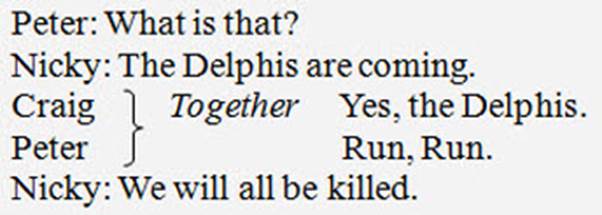
1⠀,pet]3 ,:at is t8
2⠀,nicky3 ,! ,delphis >e com+4
3⠀⠀⠀⠀⠀⠀⠀@.<,craig1 ,pet]@.> ,tgr
4⠀,craig ,yes1 ! ,delphis4
5⠀,pet] ,run1 ,run4
6⠀⠀⠀⠀⠀⠀⠀@.<,solo@.>
7⠀,nicky3 ,we w all 2 kill$4
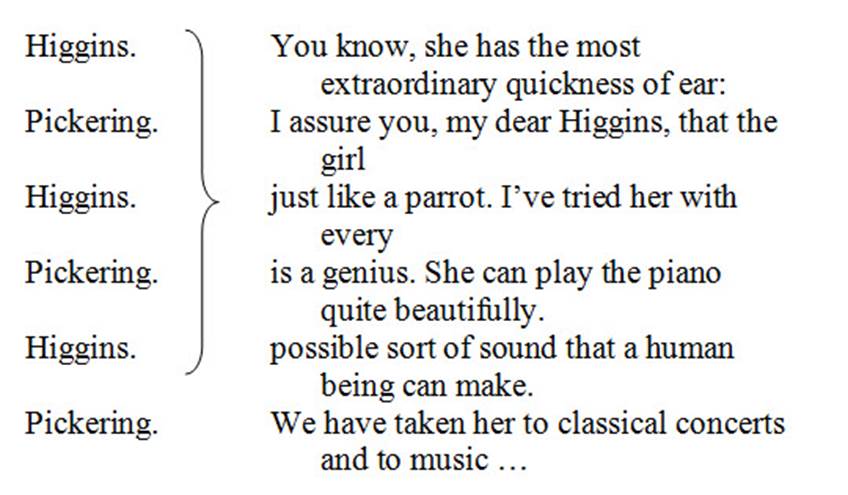
8⠀⠀⠀⠀⠀⠀⠀@.<,hi79s1 ,pick]+ tgr4@.>
9⠀,hi79s4 ,y "k1 %e has ! mo/ extraord9>y
10 ⠀⠀qk;s ( e>3
11 ,pick]+4 ,i assure y1 my de> ,hi79s1 t !
12 ⠀⠀girl
13 ,hi79s4 j l a p>rot4 ,i've tri$ h] ) e
14 ,pick]+4 is a g5ius4 ,%e c play ! piano
15 ⠀⠀q b1uti;lly4
16 ,hi79s4 possible sort ( s.d t a human 2+
17 ⠀⠀c make4
18 ⠀⠀⠀⠀⠀⠀@.<,solo@.>
19 ,pick]+4 ,we h tak5 h] to classical
20 ⠀⠀3c]ts & to music 444
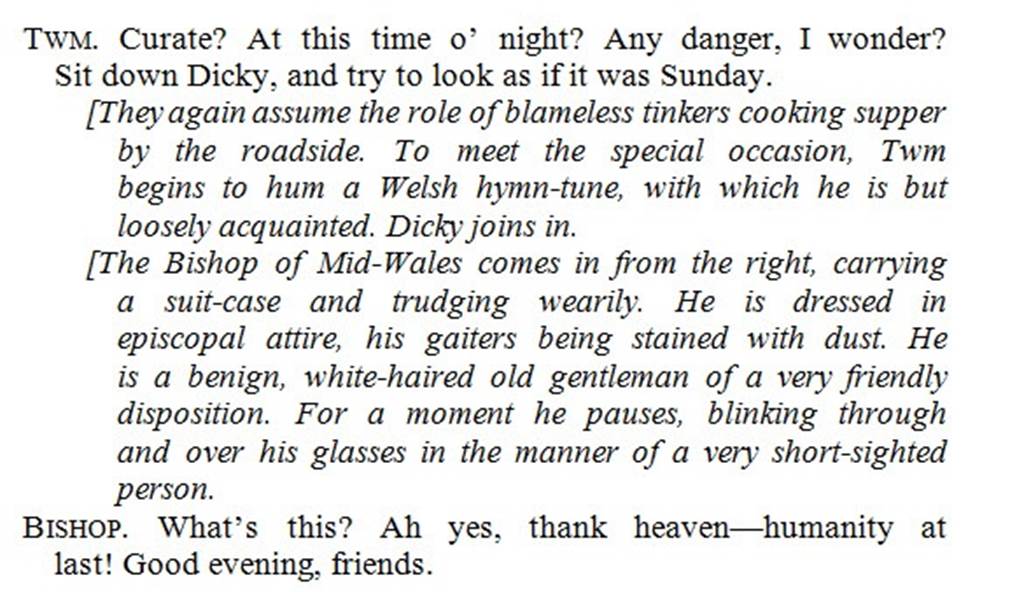
10 ,twm4 ,curate8 ,at ? "t o' ni<t8 ,any
11 ⠀⠀dang]1 ,i wond]8 ,sit d[n ,dicky1 &
12 ⠀⠀try to look z if x 0 ,sun"d4
13 ⠀⠀⠀⠀⠀⠀.<,!y ag assume ! role ( blame.s
14 ⠀⠀⠀⠀⠀⠀t9k]s cook+ supp] by ! 444
15 ⠀⠀⠀⠀⠀⠀⠀⠀.<,! ,bi%op ( ,mid-,wales comes
16 ⠀⠀⠀⠀⠀⠀9 f ! "r1 c>ry+ a suit-case &
17 ⠀⠀⠀⠀⠀⠀trudg+ we>ily4 444
18 ,bi%op4 ,:at's ?8 ,ah yes1 ?ank h1v5,-
19 ⠀⠀human;y at la/6 ,gd ev5+1 frs4
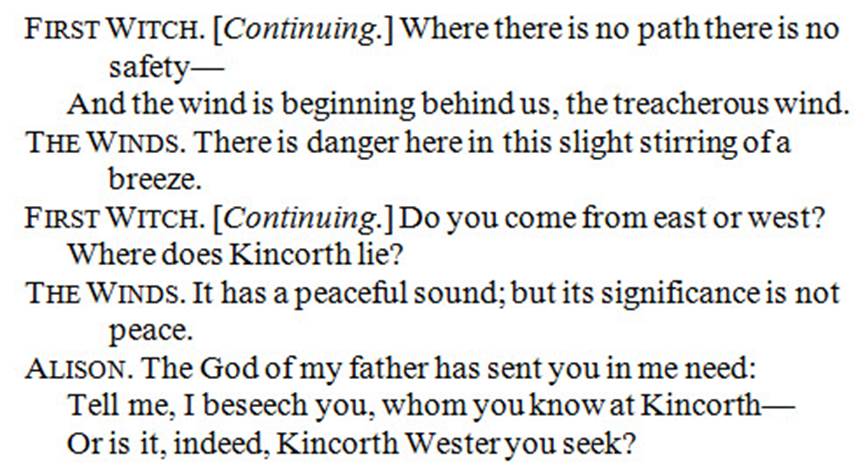
3⠀,f/ ,wit*4 .<,3t9u+4.> ,": "! is no pa?
4⠀⠀⠀⠀⠀"! is no safety,-
5⠀⠀⠀,& ! w9d is 2g9n+ 2h u1 ! tr1*]\s w9d4
6⠀,! ,w9ds4 ,"! is dang] "h 9 ? sli<t
7⠀⠀⠀⠀⠀/irr+ ( a breeze4
8⠀,f/ ,wit*4 .<,3t9u+4.> ,d y come f ea/
9⠀⠀⠀⠀⠀or we/8
10 ⠀⠀,": does ,k9cor? lie8
11 ,! ,w9ds4 ,x has a p1ce;l s.d2 b xs
12 ⠀⠀⠀⠀signific.e is n p1ce4
13 ,alison4 ,! ,god ( my "f has s5t y 9 me
14 ⠀⠀⠀⠀ne$3
15 ⠀⠀,tell me1 ,i 2see* y1 :om y "k at
16 ⠀⠀⠀⠀,k9cor?,-
17 ⠀⠀,or is x1 9de$1 ,k9cor? ,we/] y seek8
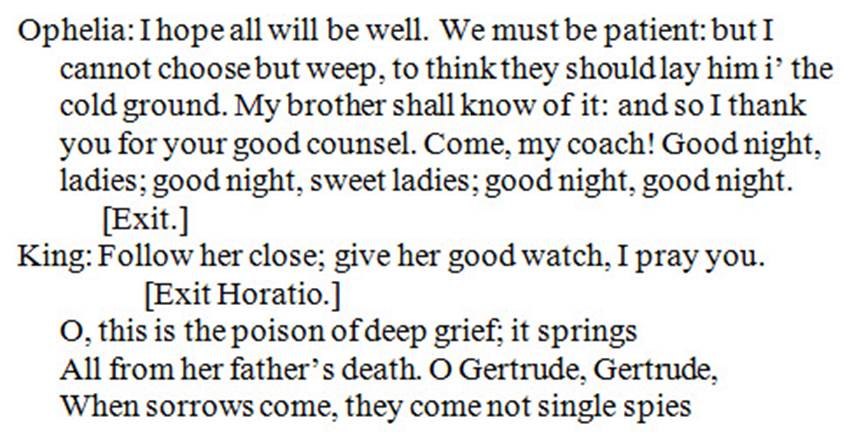
5⠀,ophelia3 ,i hope all w 2 well4 ,we m/ 2
6⠀⠀⠀pati5t3 b ,i _c *oose b weep1 to ?9k
7⠀⠀⠀!y %d lay hm i' ! cold gr.d4 ,my bro!r
8⠀⠀⠀% "k ( x3 & s ,i ?ank y = yr gd
9⠀⠀⠀c\ncel4 ,come1 my coa*6 ,gd ni<t1
10 ⠀⠀ladies2 gd ni<t1 sweet ladies2 gd
11 ⠀⠀ni<t1 gd ni<t4
12 ⠀⠀⠀⠀⠀⠀.<,exit4.>
13 ,k+3 ,foll[ h] close2 give h] gd wat*1
14 ⠀⠀⠀⠀,i pray y4
15 ⠀⠀⠀⠀⠀⠀.<,exit ,horatio4.>
16 ⠀⠀,o1 ? is ! poison ( deep grief2 x
17 ⠀⠀⠀⠀spr+s
18 ⠀⠀,all f h] "f's d1?4 ,o ,g]trude1
19⠀⠀⠀⠀,g]trude1
20 ⠀⠀,:5 sorr[s come1 !y come n s+le spies

10 ^1,web/] "<mov+ to c5t] /age1 & jo9+
11 ⠀⠀.1,jabez' h&s & .1,m>y's">4 ,& :om
12 ⠀⠀,god ha? jo9$ let no man put as"u4
13 ⠀⠀"<,he kisses .1,m>y & turns1 du/+ 8
14 ⠀⠀h&s4"> ,well1 t job's d"o4 ,i hope
15 ⠀⠀"!'s pie = br1kfa/1 nei<bor ,/"o4
16 ⠀⠀⠀⠀⠀⠀"<,&1 z "s ( ! wom51 danc+1 br+ 9
17 ⠀⠀⠀⠀⠀⠀pies f ! kit*5">
18 ⠀⠀⠀⠀⠀⠀⠀⠀⠀⠀⠀⠀⠀⠀⠀⠀⠀⠀⠀⠀⠀⠀⠀⠀⠀⠀⠀⠀⠀⠀⠀⠀⠀⠀⠀⠀⠀⠀⠀⠀
19 ⠀⠀⠀⠀⠀⠀⠀⠀⠀⠀,,,! curta9 falls,'
20 ⠀⠀⠀⠀⠀⠀⠀⠀⠀⠀⠀⠀⠀⠀⠀⠀⠀⠀⠀⠀⠀⠀⠀⠀⠀⠀⠀⠀⠀⠀⠀⠀⠀⠀⠀⠀⠀⠀⠀⠀

1⠀⠀⠀⠀⠀⠀⠀@.<,c>toon@.> #,-
2⠀⠀⠀⠀⠀,,,ctrl"6alt"6del by tim buckley
3⠀⠀⠀⠀⠀8too h>%0,' www4cad-comic4com
4⠀⠀⠀⠀⠀⠀⠀@.<,sp1k] "ns >e add$ by !
5⠀⠀⠀⠀⠀transcrib]4@.>
6⠀⠀⠀⠀⠀⠀⠀⠀⠀⠀⠀⠀⠀⠀⠀⠀⠀⠀⠀⠀⠀⠀⠀⠀⠀⠀⠀⠀⠀⠀⠀⠀⠀⠀⠀⠀⠀⠀⠀⠀⠀
7⠀⠀⠀⠀⠀⠀⠀@.<,frame #a3 "y ,woman & ,e?an
8⠀⠀⠀⠀⠀talk+4@.>
9⠀,woman ,my p>5ts get 9to t[n next week1
10 ⠀⠀s ,i ne$ yr help cl1n+ up >.d "h 9 !
11 ⠀⠀next few "ds4
12 ,e?an ,sup]b4
13 444
14 ⠀⠀⠀⠀⠀⠀@.<,frame #b@.>
15 ,e?an ,slipp$ my m9d4
16 ,woman ,e?an1 come on4 ,!y're yr p>5ts4
17 ,e?an ,no6 ,!y >e sadi/ic p :o took
18 ⠀⠀pl1sure 9 ^1tortur+ _! *4
19 ⠀⠀⠀⠀⠀⠀@.<,frame #c3 ,e?an is %[n z a *
20 ⠀⠀⠀⠀play+ a video game1 :ile 8 "m is
21 ⠀⠀⠀⠀po9t+ a f+] at hm4@.>
22 ,"m ,no m video games until y're d"o )
23 ⠀⠀yr home"w4
24 ⠀⠀⠀⠀⠀⠀444
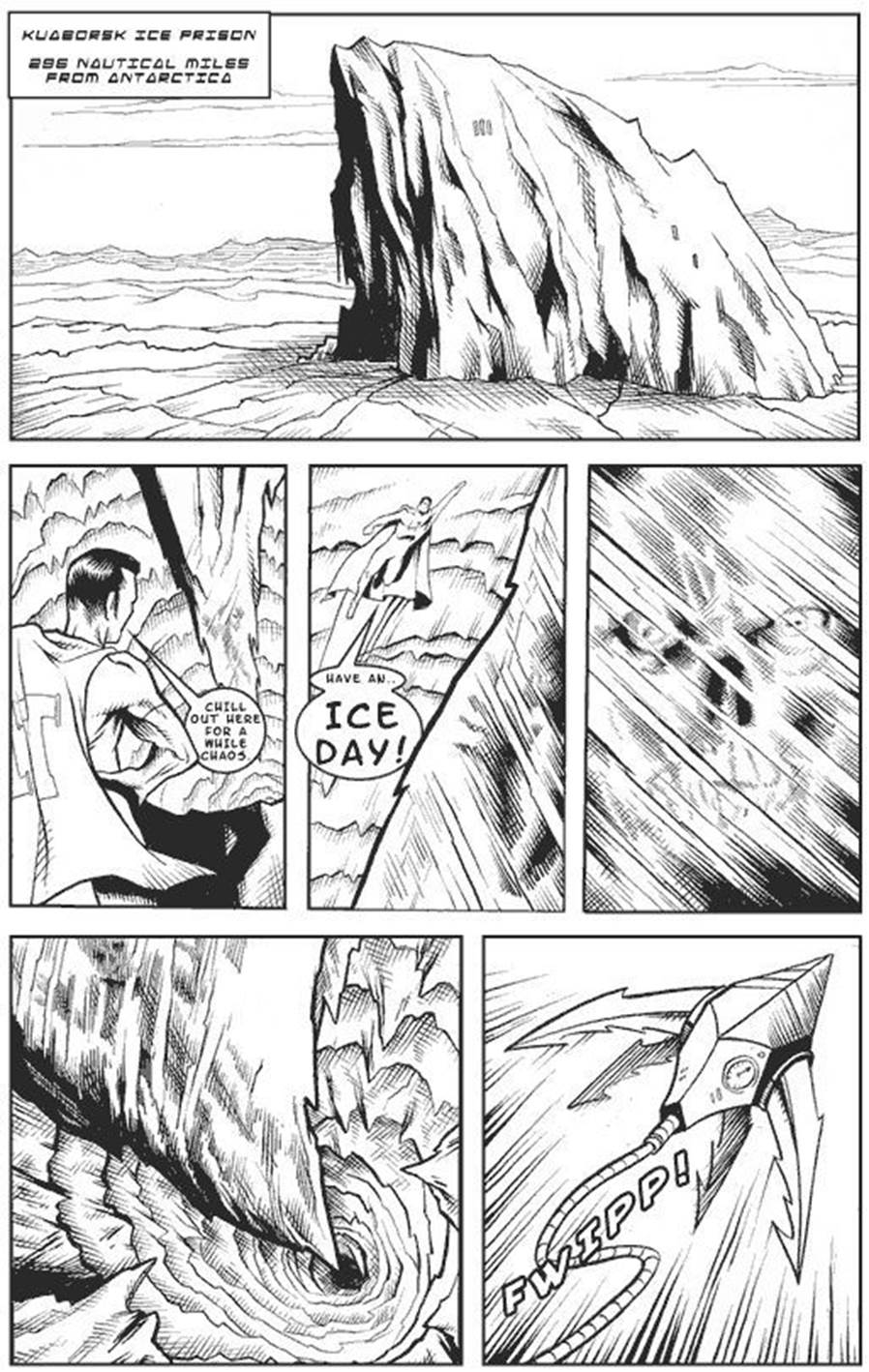
1⠀⠀⠀⠀⠀⠀⠀@.<,frame #a@.>
2⠀,kuaborsk ,ice ,prison #bif nautical
3⠀⠀⠀miles f ,ant>ctica
4⠀⠀⠀⠀⠀⠀⠀@.<,frame #b@.>
5⠀,capta9 ,ju/ice @.</&+ at ! ice
6⠀⠀⠀prison@.> ,*ill \ "h = a :ile ,*aos4
7⠀⠀⠀⠀⠀⠀⠀@.<,frame #c@.>
8⠀,capta9 ,ju/ice @.<fly+ away@.> ,h an
9⠀⠀⠀444 ,,ice ,,"d6
10 ⠀⠀⠀⠀⠀⠀@.<,frame #d3 ,*aos look+ \ f 2h !
11 ⠀⠀⠀⠀ice@.>
12 ⠀⠀⠀⠀⠀⠀@.<,frame #e3 ,a :irlw9d pulls
13 ⠀⠀⠀⠀,*aos f ! ice@.>
14 ⠀⠀⠀⠀⠀⠀@.<,frame #f@.>
15 ,,fwipp6 @.<,s.d made z a grappl+ hook
16 ⠀⠀3nect$ to a te!r %oots (f 9to
17 ⠀⠀space4@.>